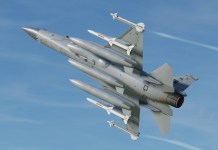Who has the correct analysis on the Kashmir Dispute, Al-Jazeera (AJ) or the New York Times (NYT)? On May 18, NYT published an editorial on Kashmir Crisis, “A long shot in Kashmir“.
As per AJ, the NYT editorial totally distorts the nature of the Kashmir Issue and bolsters the false impression of it being a “territorial dispute” between India and Pakistan. In a counter editorial by Al-Jazeera, “Why the NYT is really wrong about Kashmir,” EurAsian Times talks to the actual stakeholders, i.e., the People of Jammu and Kashmir, for accurate analysis.
Kashmir Valley is Only 15% of Jammu and Kashmir
Point 1: As per AJ, the NYT raises the bogey of “Islamism” to subdue the genuine mass aspirations for self-determination and freedom from India among Kashmiris. In its editorial, AJ claims that one of the main setbacks of the Kashmiri people has been that their struggle for self-determination continues to be linked to an India-Pakistan conflict.
Prof. Raina, a Kashmiri Pandit in exile, argues that AJ needs to understand that the complete name of the state of Kashmir is Jammu and Kashmir, which includes three parts i.e., Kashmir, Jammu and Ladakh.
Ladakh is the biggest region in terms of geographical area but the least populated, whereas Kashmir is the smallest region with the highest population. Prof. Raina says that people in Jammu and Ladakh argue that how can a region which only holds 15% of the mass decide the fate of the ones who control the remaining 85%?
| Division | Area km2 | Percentage Area |
|---|---|---|
| Kashmir | 15,948 | 15.73% |
| Jammu | 26,293 | 25.93% |
| Ladakh | 59,146 | 58.33% |
| Jammu and Kashmir | 101,387 km2 | 100% |
What About The Massacre of Kashmiri Pandits?
Point 2: The second point raised by AJ was the need to introspect the political aspirations of the Kashmiri people during the colonial period. Kashmiris began their first rebellion against the Dogras, a Hindu monarchy, in 1931. While this historic movement became entangled in the politics of British India’s partition, the Kashmiri ambition to decide their own future not only continued but gained momentum.
How India Won Bangladesh and Lost Kashmir in 1971: Kashmir Dispute
According to AJ, Naive references to “Islamist insurgency” and its backing by Pakistan play easily into Indian conspiracy theories to vilify the local Kashmiris. These conspiracy theories do not explain the existence of a decades-old Kashmiri self-determination movement before the 1990s, nor do they cover the entire range of Kashmiri perspectives.
A prominent Kashmir Pandit organization questions AJ on why they failed to mention to brutal massacre and exodus of Kashmiri Pandits by so-called freedom fighters. Thousands of Kashmir Pandits were murdered in broad daylight, which forced the remaining 700,000 Pandits to flee their homeland, leaving behind everything they had, including properties and jobs. Why has Al-Jazeera not talked about the atrocities on Kashmir Pandits?
Osama Bin Laden Was Found in Pakistan, Not India
Point 3: According to AJ, while Pakistan remains a party to the dispute, its role since 9/11 has been minimal. The massive demonstrations in Kashmir are not stimulated by Pakistan; this is an indigenous rebellion.
Kashmiris are demanding an end to the Indian occupation and are fighting for the right to self-determination. A referendum was promised to them by the government of India during the Partition and recognized by the international community in the UNSC Resolution 47 (1948). Shockingly, there is not a word that Kashmir remains the largest militarily occupied zone in the world. Over 700,000 Indian soldiers forcibly control a population of eight million.
Why Do Kashmiri Muslims Love to Hate India? Opinion
AJ criticized the NYT editorial for not mentioning the Armed Forces Special Powers Act (AFSPA), which gives unlimited powers and complete impunity to the Indian army to kill, maim and arrest individuals at whims. Tens of thousands of Kashmiris have been killed, thousands have been imprisoned by the Indian authorities, and an infinite number of people have just disappeared.
AJ denounces NYT editorial for hailing India’s ostensible “ceasefire” offer. The ceasefire in Kashmir is supposed to put a momentary halt to Indian army operations against local militants but blames India for doing nothing to ease the burden of the people of Kashmir.
In the 1972 Simla Agreement, both India and Pakistan pledged to settle their differences by peaceful measures through bilateral negotiations”. The Simla agreement transformed the cease-fire line of 17 December 1971 into the Line of Control (LOC) between India and Pakistan, and it was agreed that “neither side shall seek to alter it unilaterally.
Critics argue that Pakistan has consistently broken the agreement and sponsored cross-border terrorism in India, besides attacking India during the Kargil War. Pakistan has also been shielding the mastermind of the 2008 Mumbai attacks, which the former Pakistani PM Nawaz Sharif admitted was sponsored by Pakistan.
Indian PM has clearly stated that terror and talks cannot go hand in hand. Until and unless Pakistan does not stop sponsoring, arming, training, and radicalizing youths to pick arms and attack India, there is no value of India-Pakistan talks. Prof. Raina says that AJ might try to defend Pakistan, but the world will not forget that Osama Bin Laden was found in Pakistan which was in the knowledge of the country’s senior military and civilian leadership.
Palestinian Protest and Kashmir Unrest: Why are the Casualties So High?
The ceasefire offered by India to both Pakistan and Kashmiri militants during the holy month of Ramadan was a great step by New Delhi, but unfortunately, religious fanatics and terrorists don’t understand the language of peace, and it thus becomes imperative for the Indian army to quell the sponsored terrorists.
Must Read at EurAsian Times: Can’t accept Independent Kashmir as a Permanent Solution: Pakistan Prime Minister




